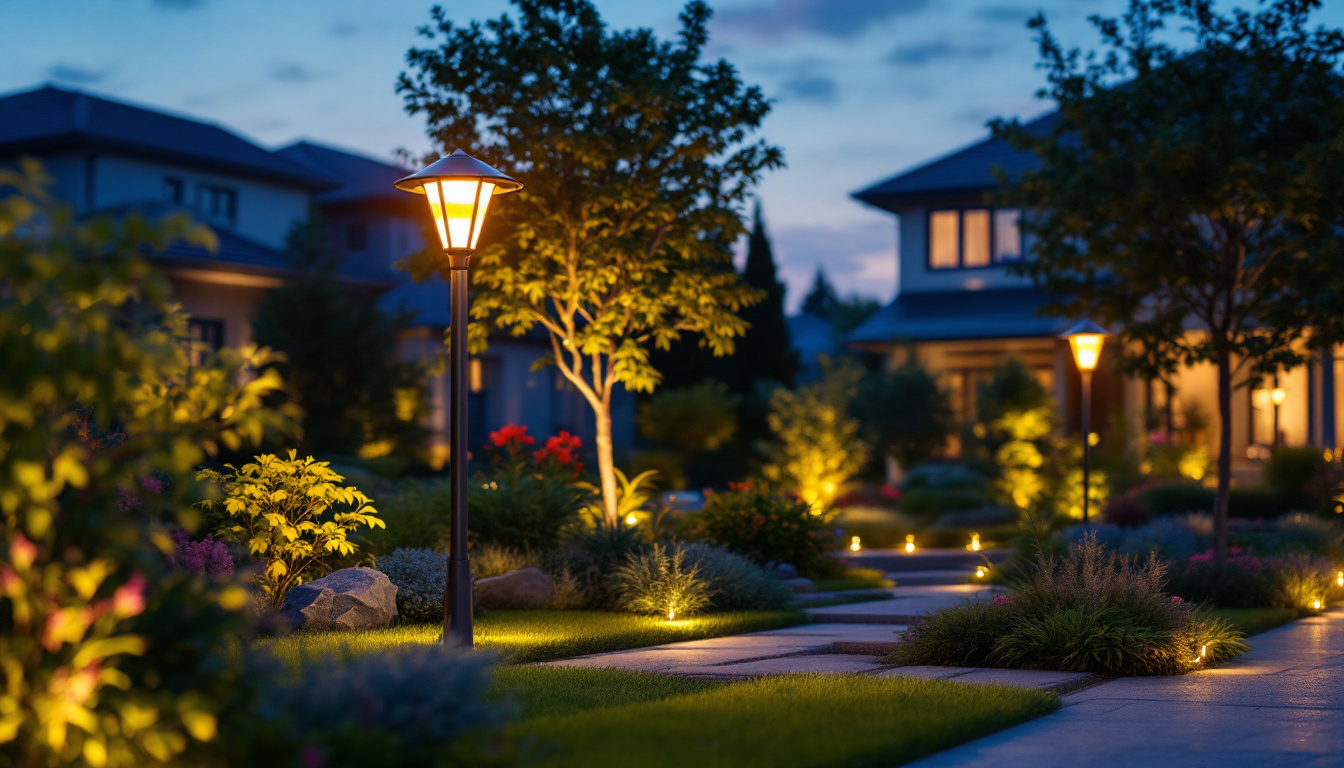
In recent years, outdoor solar lanterns have gained immense popularity among homeowners and lighting contractors alike. These eco-friendly lighting solutions not only enhance the aesthetic appeal of patios and gardens but also provide practical illumination without the need for traditional wiring. Understanding the benefits and applications of solar lanterns can significantly elevate a contractor’s offerings and client satisfaction.
This article serves as a comprehensive guide for lighting contractors looking to master the art of integrating outdoor solar lanterns into their projects. From understanding the technology behind solar lighting to exploring design options, this resource aims to equip professionals with the knowledge they need to excel.
One of the most compelling advantages of outdoor solar lanterns is their ability to operate independently of the electrical grid. This feature not only reduces installation costs but also makes them an excellent choice for remote areas where access to electricity may be limited. With advancements in solar technology, many modern lanterns now come equipped with high-efficiency solar panels and long-lasting LED bulbs, ensuring that they can provide reliable lighting even on cloudy days. Additionally, the variety of styles available—from sleek, contemporary designs to rustic, vintage-inspired options—allows contractors to cater to diverse aesthetic preferences, ensuring that every project can be tailored to the homeowner’s unique vision.
Moreover, the environmental benefits of solar lanterns cannot be overstated. By harnessing the power of the sun, these lanterns significantly reduce carbon footprints and energy consumption, aligning with the growing trend towards sustainable living. Many manufacturers are also focusing on using recyclable materials in their products, further enhancing their appeal to eco-conscious consumers. As homeowners become increasingly aware of their environmental impact, offering solar lanterns can position lighting contractors as forward-thinking professionals committed to sustainability, thereby attracting a clientele that values both style and responsibility in their outdoor spaces.
Solar lanterns operate using photovoltaic cells that convert sunlight into electricity. This process involves several key components: solar panels, batteries, and LED lights. During the day, solar panels absorb sunlight and generate energy, which is stored in rechargeable batteries. As dusk falls, the stored energy powers the LED lights, illuminating outdoor spaces without consuming grid electricity.
One of the primary advantages of solar technology is its sustainability. By harnessing renewable energy, solar lanterns contribute to reducing carbon footprints and promoting eco-friendly practices. For lighting contractors, this presents an opportunity to align with the growing demand for sustainable solutions in outdoor lighting.
To effectively design and install solar lanterns, it is essential to understand their components. Each lantern typically includes:
Familiarity with these components allows contractors to troubleshoot issues, recommend appropriate products, and educate clients about maintenance and care.
Outdoor solar lanterns come in a variety of styles, from traditional to modern designs. When selecting lanterns for a project, contractors should consider the overall aesthetic of the space. For instance, a rustic patio may benefit from lanterns with a vintage finish, while a contemporary garden could be enhanced by sleek, minimalist designs.
Additionally, the size and scale of the lanterns should complement the surrounding environment. Oversized lanterns can serve as focal points, while smaller options may be better suited for subtle illumination along pathways or garden beds.
The placement of solar lanterns is crucial for maximizing their effectiveness. Contractors should assess the area to determine optimal locations where lanterns will receive adequate sunlight throughout the day. Common placements include:
Functionality also plays a significant role in design. Some solar lanterns come with features such as motion sensors, dimming capabilities, and color-changing options, allowing contractors to tailor lighting solutions to meet specific client needs.
Before installation, a thorough site assessment is essential. Contractors should evaluate the landscape, noting potential obstructions such as trees or buildings that may cast shadows on solar panels. Ensuring that lanterns receive direct sunlight for most of the day is critical for optimal performance.
In addition to sunlight exposure, contractors should consider the local climate. Areas with frequent rain or snow may require lanterns with higher durability ratings to withstand harsh conditions. Selecting the right materials and designs can prevent premature wear and ensure longevity.
Installing solar lanterns typically involves straightforward steps, but attention to detail is vital. Here are some best practices:
Maintaining solar lanterns is relatively simple, but regular care can enhance their lifespan and performance. Contractors should advise clients on the following maintenance practices:
Even well-installed solar lanterns may encounter issues. Here are some common problems and their solutions:
Educating clients about solar lanterns is crucial for ensuring satisfaction and promoting long-term use. Lighting contractors should provide clients with detailed information about how solar lanterns work, their benefits, and maintenance requirements. This knowledge empowers clients to make informed decisions and fosters trust in the contractor’s expertise.
Consider creating informational brochures or digital resources that outline the advantages of solar lighting, installation processes, and maintenance tips. This not only enhances the client experience but also positions the contractor as a knowledgeable resource in the field.
One effective way to build credibility and attract new clients is by showcasing successful projects involving solar lanterns. Creating a portfolio that highlights various installations can serve as a powerful marketing tool. Include high-quality images, descriptions of design choices, and client testimonials to illustrate the impact of solar lighting on outdoor spaces.
Additionally, sharing case studies that detail the challenges faced and solutions implemented can provide valuable insights to potential clients. This approach not only demonstrates expertise but also inspires confidence in the contractor’s ability to deliver quality results.
The field of solar technology is continually evolving, with new advancements enhancing the performance and versatility of solar lanterns. Innovations such as improved battery technology, more efficient solar panels, and smart lighting features are becoming increasingly common. Staying informed about these trends can help contractors offer cutting-edge solutions to their clients.
For instance, the integration of smart technology allows for remote control of solar lanterns via mobile apps. This feature enables users to adjust brightness levels, set timers, and even change colors, providing a customizable lighting experience.
As sustainability becomes a focal point in the lighting industry, manufacturers are increasingly using eco-friendly materials in solar lantern production. Lighting contractors should be aware of these options and consider recommending products made from recycled or biodegradable materials. This not only aligns with environmental goals but also appeals to clients who prioritize sustainability in their purchasing decisions.
Outdoor solar lanterns represent a dynamic and sustainable lighting solution for patios and outdoor spaces. For lighting contractors, mastering the intricacies of solar technology, design considerations, installation practices, and maintenance can significantly enhance their service offerings. By staying informed about industry trends and providing comprehensive education to clients, contractors can position themselves as leaders in the solar lighting market.
As the demand for eco-friendly solutions continues to grow, embracing solar lanterns not only benefits clients but also contributes to a more sustainable future. With the right knowledge and resources, lighting contractors can effectively harness the power of solar technology to illuminate outdoor spaces beautifully and responsibly.
Ready to elevate your lighting projects with the latest in solar technology? LumenWholesale is your go-to source for spec-grade outdoor solar lanterns that promise both style and sustainability. Enjoy unbeatable wholesale prices and an extensive selection that meets the highest industry standards. With free shipping on bulk orders, you can provide your clients with premium, eco-friendly lighting solutions at the best value. Don’t let hidden fees dim your project’s potential. Choose LumenWholesale for quality, affordability, and convenience. Wholesale Lighting at the Best Value is just a click away.

Discover essential tips and strategies for lighting contractors to master the integration of solar-powered LED lights.

Discover how T8 LED bypass ballast technology is revolutionizing the lighting industry for contractors.

Discover how solar lamp outdoor solutions are transforming the landscape for lighting contractors.

Discover the essential insights lighting contractors need to meet client expectations for outdoor building lights.